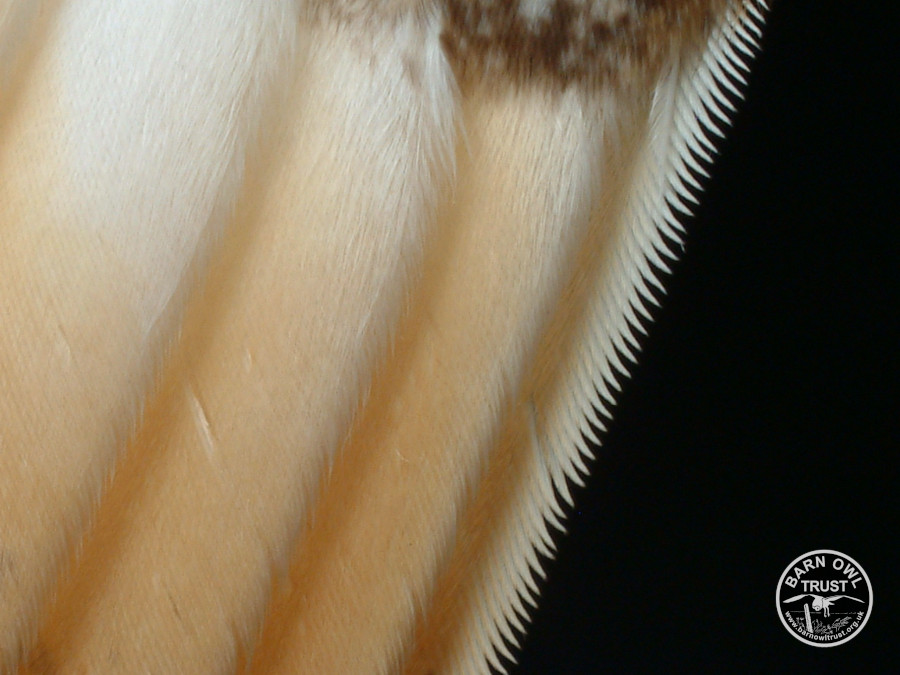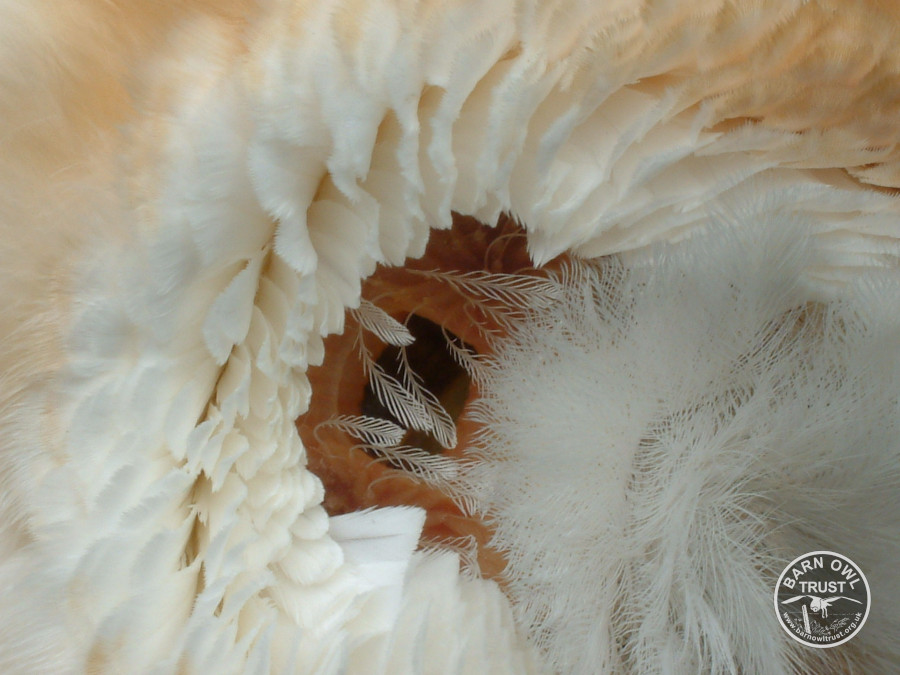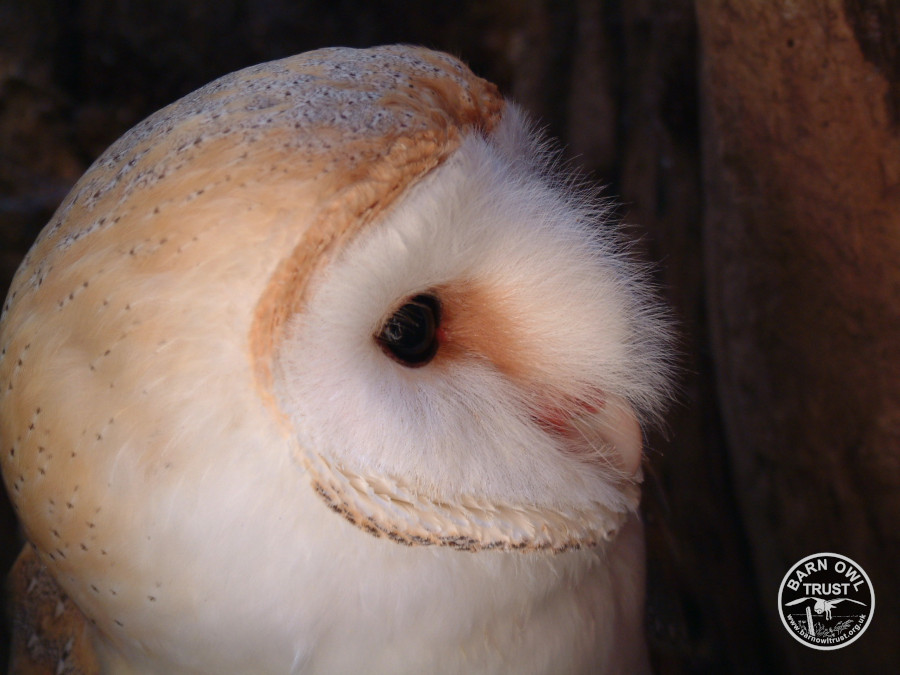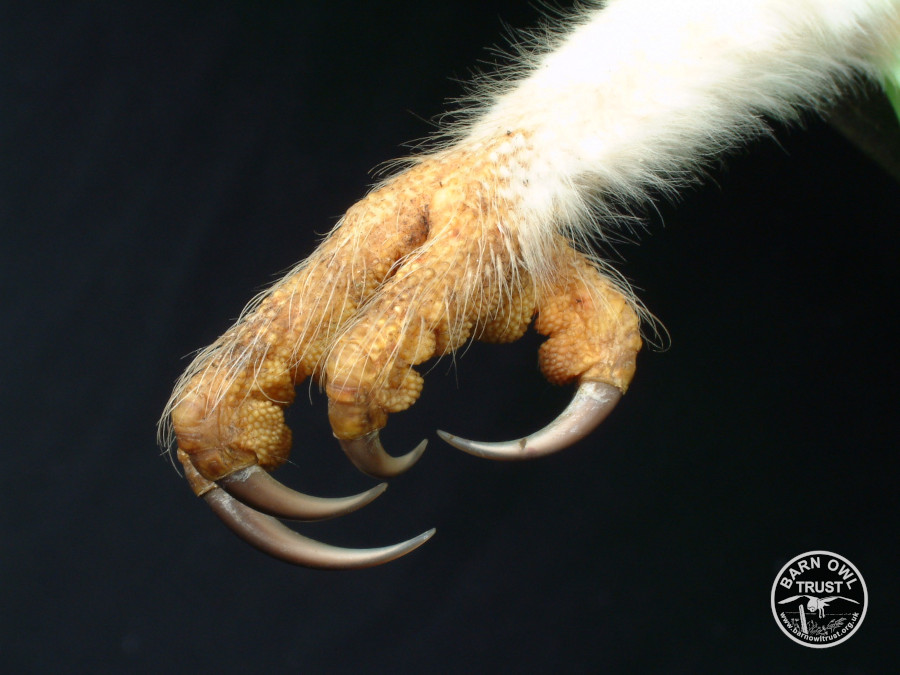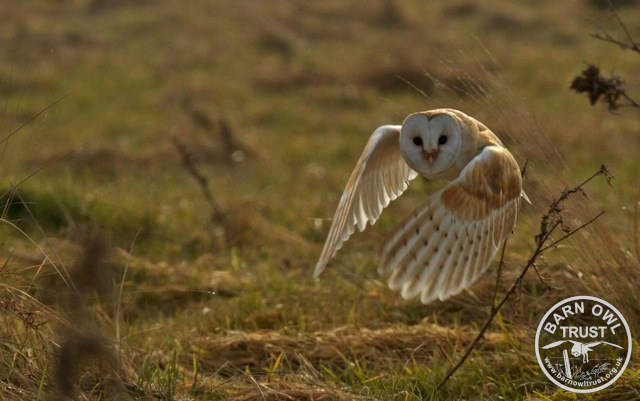Barn Owl adaptations
Flight
- Compared with most birds, Barn Owls have a very low wing loading (large wings supporting a lightweight body).
- This means they are able to fly very slowly without stalling and hover in only the slightest lift (rising air).
- Slow flight gives the birds ample time to locate and pinpoint prey on the ground below.
- Low wing loading enables them to pass through the air very gently and hover with minimal effort
Slow-Mo Barn Owl in Flight – Unexpected Wilderness – BBC
Robert MacFarlane admires a beautiful barn owl in flight and takes a look at a snowy Epping forest
Feathers
The owls’ feathers are very soft – another adaptation for quiet flight;
- The flight feathers are covered in a thin hair-like structure that traps air within the feather surface. This helps to maintain a smooth air-flow across the wings and thereby avoid stalling at very low airspeeds.
- The foremost wing feather (the 10th primary) also has a row of tiny hooks that help to deaden the sound of air hitting the wings’ leading edge.
- Silent flight enables the birds to hear the tiny sounds produced by their small mammal prey and approach them undetected.
- Compared with other birds, Barn Owl feathers are not particularly waterproof.
- They generally avoid hunting in rain as wet feathers increase noise and reduce efficiency.
- See more close-up pictures of Barn Owl feathers.
Hearing
- The Barn Owl’s heart-shaped face, or ‘facial disk’, collects and directs sound toward the inner ears.
- The ear openings are situated inside the facial disk just behind the eyes.
- They are shaped differently and placed asymmetrically, one higher than the other.
- Sounds reaching the ears are therefore heard differently which helps the owl’s brain work out the exact position of the sound source.
- The ears are particularly good at detecting the high frequency sounds emitted by small mammals moving in vegetation and vocalising.
- Experiments have shown that Barn Owls are able to capture prey in total darkness by hearing alone.
- This also comes in useful when trying to catch small mammals in deep cover.
- Barn Owl hearing is one of the most sensitive of any animal ever tested!
- Despite this they sometimes choose to roost and nest in very noisy places.
Eyesight
- Barn Owl eyes are, on average, twice as light sensitive as human eyes.
- The owl’s low-light vision is highly movement sensitive.
- Anything that moves is instantly noticed but anything that keeps still (and silent) is usually ignored.
- Barn Owls take little notice of artificial lights and may even use them as an aid to hunting.
- Sudden exposure to very bright lights (such as car headlights) in dark situations may cause brief visual impairment.
- Their dark-adapted eyes also work well in full sunlight.
Legs, toes and talons
- Barn Owls have remarkably long legs, toes and talons.
- This helps them to catch prey at the base of deep vegetation.
- The talons are extremely sharp and prey is thought to be killed by foot clenching rather than a peck.
Camouflage
- When viewed from above Barn Owls are quite well camouflaged.
- The rough grassland over which they usually hunt is, for most of the year, the same predominantly light brown colour as their upperparts.
- We think the most plausible explanation for the Barn Owl’s white underside is that it works as an anti-silhouette strategy: birds almost always appear as a dark silhouette when viewed from below – so birds with paler underparts are less visible. It’s also been suggested that light reflected off the owls’ white feathers may exploit a voles’ natural aversion to bright light causing them to freeze thereby making them easier to catch.
There is more information about this topic in the…
Take a look at our gallery of…
